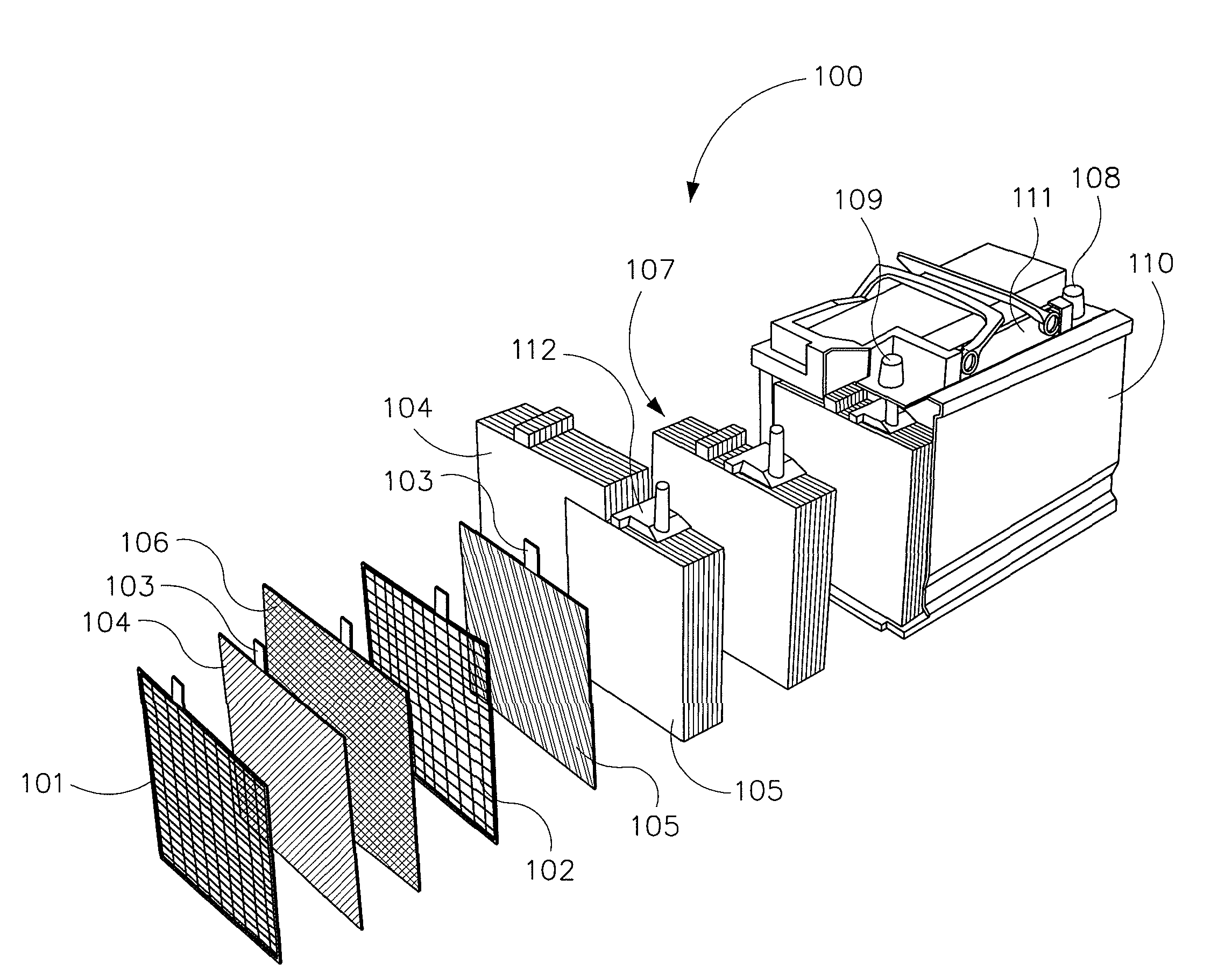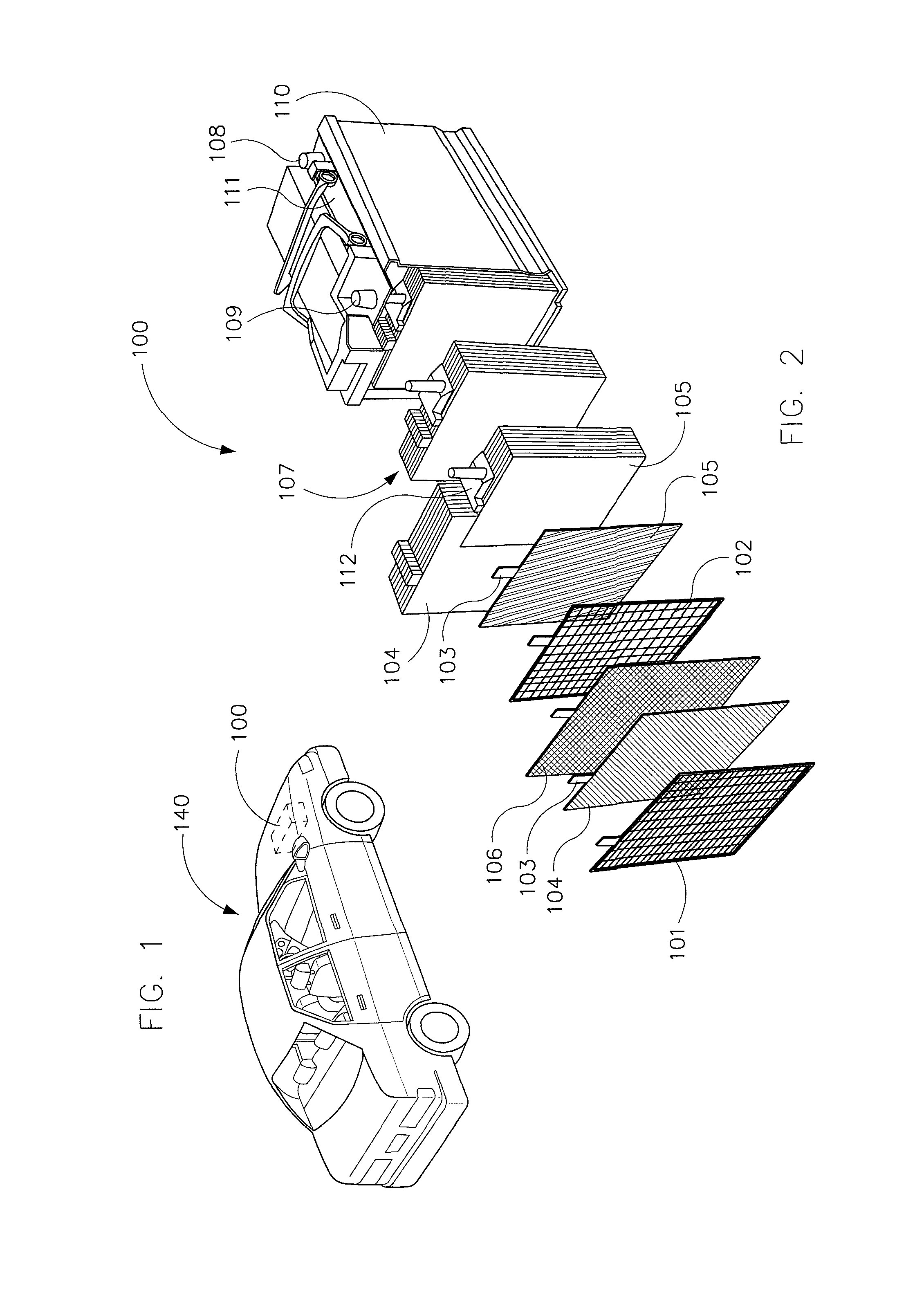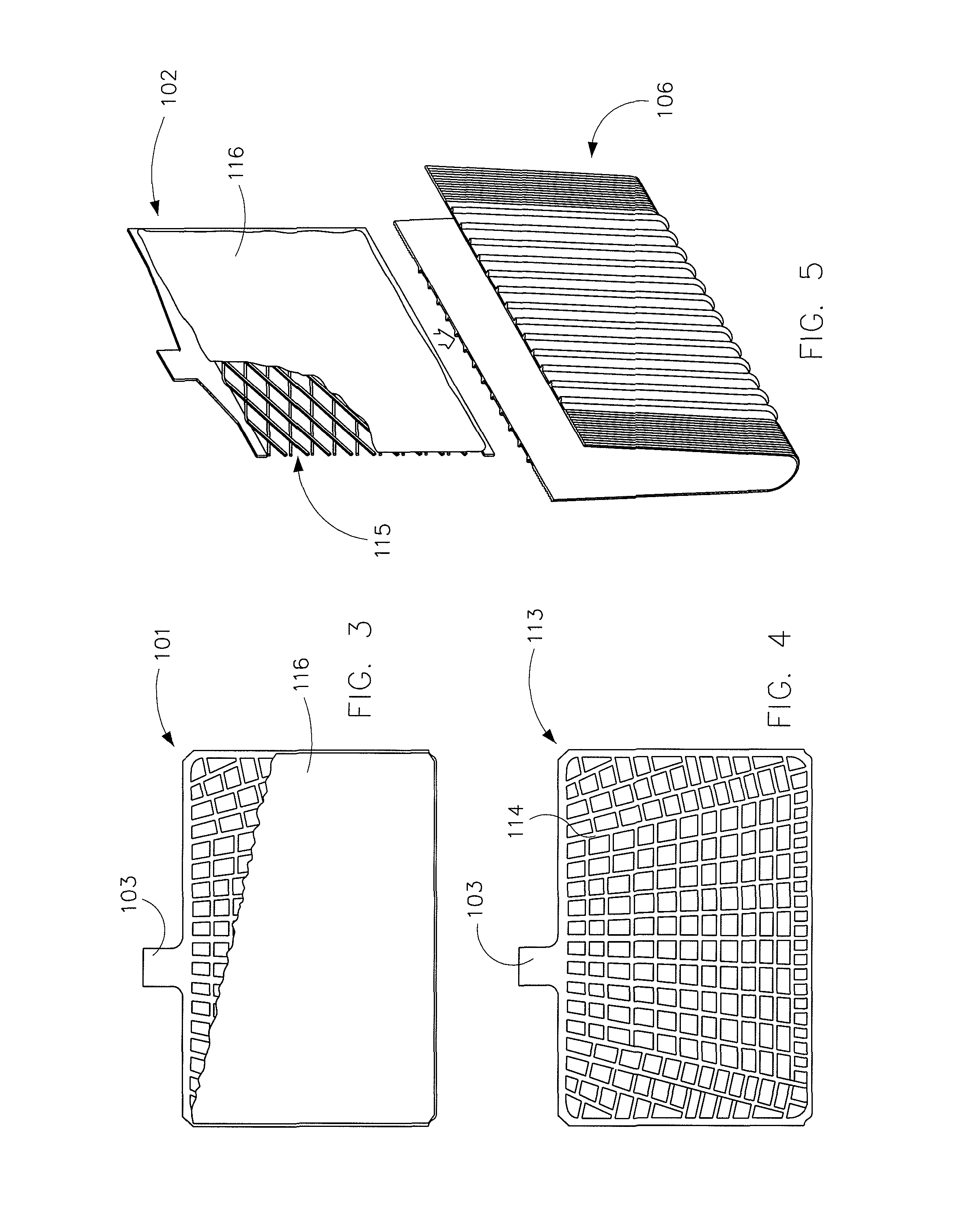Battery electrode and method for manufacturing same
- Summary
- Abstract
- Description
- Claims
- Application Information
AI Technical Summary
Benefits of technology
Problems solved by technology
Method used
Image
Examples
example 1
[0120]A lead storage battery for start-stop applications was assembled using electrodes manufactured as described above. More specifically, the positive electrodes included a stamped grid (i.e., PowerFrame™ grid), active material and the pasting textile or scrim shown in FIGS. 7 and 8. The pasting textile was constructed of a continuous PET homopolymer having a round cross section and generally smooth texture. The pasting textile was point-bonded with a weight of 0.5 oz. per square yard and a thickness of 4.3 mils. The microfiber diameter was about 12-16 μm and the fiber denier was about 2.2 per fiber.
[0121]The stop / start cycling properties of the assembled battery was tested against the stop / start cycling properties of a battery having similarly-constructed negative electrodes and polyethylene separators, and positive electrodes including a stamped grid (i.e., PowerFrame™ grid), active material and a conventional pasting paper provided thereon. A graph comparing the stop / start cycl...
example 2
[0122]An improved flooded lead storage battery was assembled using electrodes manufactured as described above. More specifically, the positive electrodes included a stamped grid (i.e., PowerFrame™ grid), active material and the pasting textile or scrim shown in FIGS. 7 and 8. The pasting textile was constructed of a continuous PET homopolymer having a round cross section and generally smooth texture. The pasting textile was point-bonded with a weight of 0.5 oz. per square yard and a thickness of 4.3 mils. The microfiber diameter was about 12-16 μm and the fiber denier was about 2.2 per fiber.
[0123]The repetitive reserve capacity cycling of the assembled lead storage battery was tested, measured and compared against the repetitive reserve capacity cycling of a battery having electrodes using similar grids and active material, but positive electrodes including pasting paper instead of a pasting textile, and glass mat separators which are common or standard in high cycling applications...
PUM
| Property | Measurement | Unit |
|---|---|---|
| Length | aaaaa | aaaaa |
| Length | aaaaa | aaaaa |
| Thickness | aaaaa | aaaaa |
Abstract
Description
Claims
Application Information
 Login to View More
Login to View More - R&D
- Intellectual Property
- Life Sciences
- Materials
- Tech Scout
- Unparalleled Data Quality
- Higher Quality Content
- 60% Fewer Hallucinations
Browse by: Latest US Patents, China's latest patents, Technical Efficacy Thesaurus, Application Domain, Technology Topic, Popular Technical Reports.
© 2025 PatSnap. All rights reserved.Legal|Privacy policy|Modern Slavery Act Transparency Statement|Sitemap|About US| Contact US: help@patsnap.com



